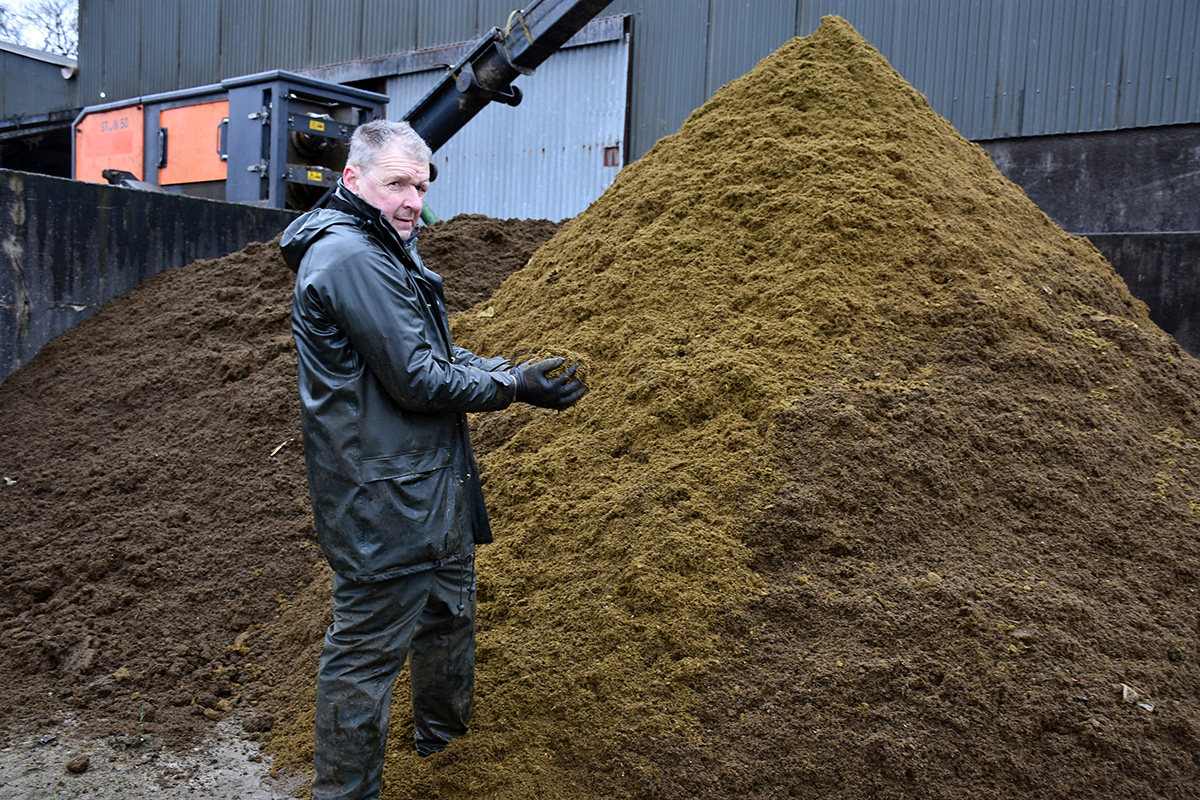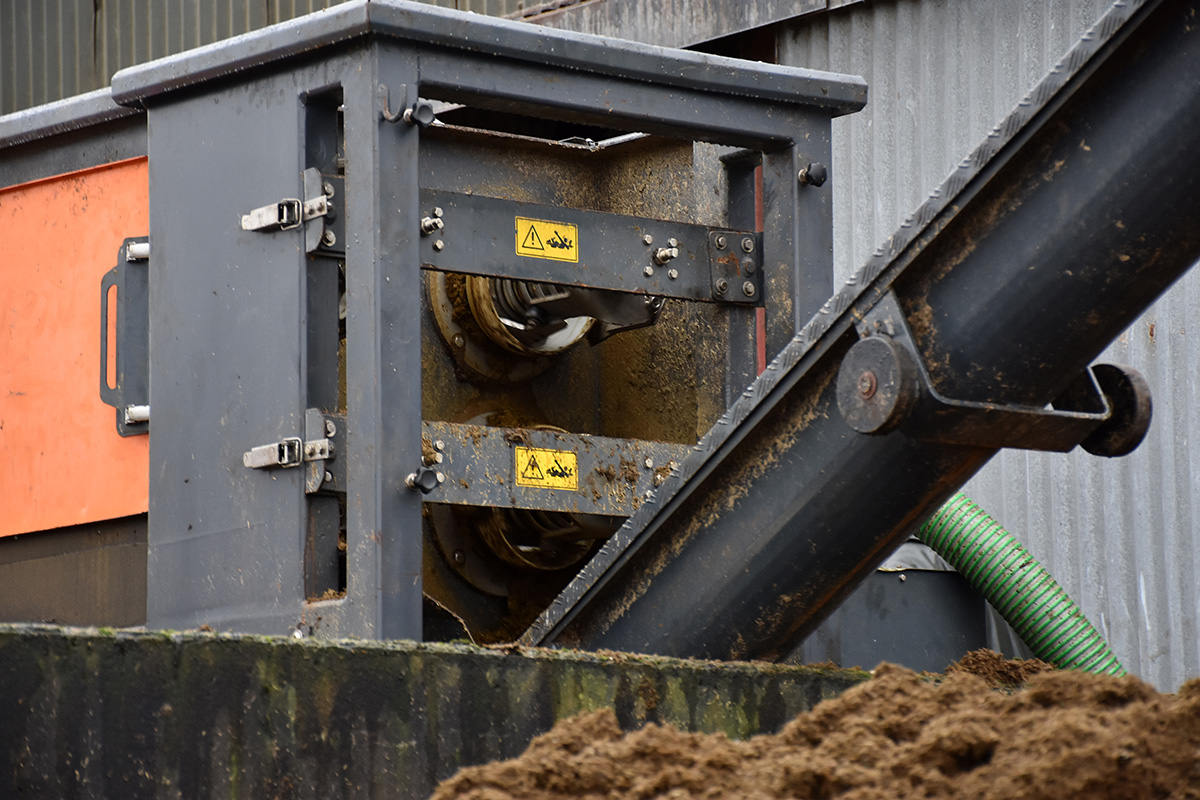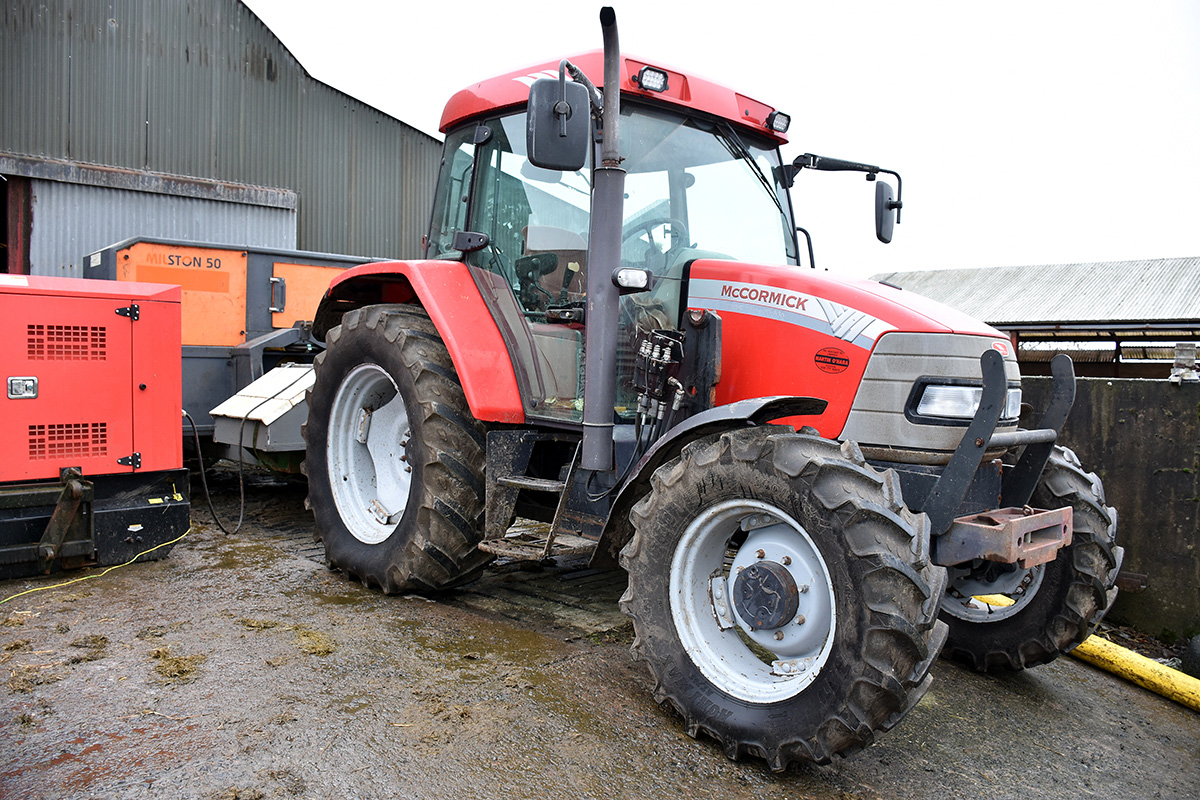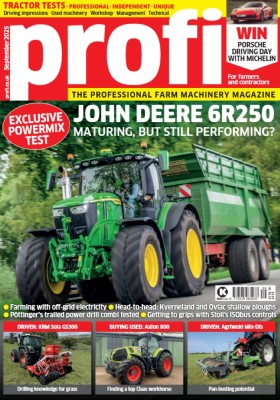Separating slurry solids and liquid makes a lot of sense and not just from increasing the amount of available storage. The higher nitrogen containing liquid could be the ideal grass growing booster needed to reduce the reliance on bought in fertiliser. One Northern Ireland contractor is currently in demand for his new mobile separating service
The recent escalation of fertiliser prices could be described as the perfect storm given all the factors that have contributed to the hike. High global energy prices meant some fertiliser manufacturers reduced their production levels elevating demand and prices. But whatever the reasons farmers have been left with a dilemma, either fork out a lot more money or reduce their fertiliser usage.
Although farm commodity prices have also been much better of late, that bonus won’t stay in the bank accounts long if farmers purchase their normal fertiliser order. The dilemma, therefore, is to take the financial hit, or use less fertiliser and risk a shortage of grass and silage come next winter. However, there is another solution that involves separating slurry into solids and liquids, each rich in specific nutrients, which can be applied to the land saving money on the expensive artificial fertiliser.
The benefits of such a practice have been well documented over the years, but in a nutshell, separating the solids from the liquid means that slurry can be managed more easily. The solid material can be heaped up, stored and transported easily and the liquid portion is then much lower in volume which saves slurry storage requirement. And that’s exactly where Richard Foster fits into the equation with his Precision Slurry Management business based in Limavady. Essentially, Richard runs a mobile slurry separator that he takes from farm to farm around Northern Ireland separating slurry from mostly dairy farms and some AD plants.

Richard Foster has been operating his business since 2020 and is in big demand.
Niche opportunity
Richard started off with a separator mounted on a flat-bed tuck but this did not prove to be the success he initially hoped for so he switched to a unit behind a tractor. Even though there are a number of companies marketing on-farm slurry separators Richard believes he is the only contractor offering a mobile service in both Northern Ireland and the Republic of Ireland. This, he suggests, is why his phone never stops ringing and demand for his service is very high.
Having worked all over the UK and Ireland managing farms Richard spotted a niche opportunity for a slurry separator business to flourish.
“Precision Slurry Management started trading in September 2020, offering farmers in Ireland, mainly Northern Ireland, a mobile slurry separation service,” he explains. “As part of my previous job as a farm manager in Scotland, I was lucky enough to see a mobile slurry separator being demonstrated on the farm. It was an early Bauer plug in and play system, and the principle of this system interested me.
“When Covid-19 hit I found myself unable to find suitable employment after relocating back home, so I decided to start my own contracting service to offer farmers the benefits of slurry separation without the massive outlay required with this system. Over the summer of 2020 I researched different mobile slurry separators, and eventually settled on a Storth mobile SP600. The main concern at that time though was would there be enough interest in slurry separation to justify purchasing a machine, plus generator and a lorry to transport it about. However, I had belief in the benefits of the system and after I got the PSV test on a 2009 Renault Midlum lorry, the service was launched on September 1, 2020.”
Getting going
At that time of the year farmers were rallying hard to empty their slurry storage before the spreading ban deadline came on October 15. Richard discovered the initial uptake of his service was slow, apart from a couple of farms trying it out to see what it was like.
By the end of November, uptake had improved and the order book soon filled up after farmers noticed adverts on DoneDeal and on the Precision Slurry Management facebook page. This busy spell proved challenging as the machine’s capacity wasn’t anywhere near what it should have been.
“With the increase in customers and the machine out working, this is when the steep learning curve came,” points out Richard. “In order to make the system pay I was looking for a production capacity of around 40 to 50 cubic metres per hour. The actual throughput of the machine was only about one third of what it was bench tested for. I have since found out that separators are tested on water, not on cow slurry hence the throughput goes down.

Screens inside the machine press out the solid material…
How to charge
“The separator on the lorry was being powered by a three phase 40kw generator. In order to keep it fair for my clients, I had to rejig my pricing structure. Initially I had budgeted on charging by the hour, but because of the slower throughput, this would have made it unviable for farmers, so I changed pricing to charge by the cubic metre of liquid produced after the solids have been separated.”
Dairy farmers, particularly, are realising the benefits of separating slurry given the hikes in fertiliser costs. With an abundance of enquiries, he has had to turn farmers away and there has been a change of machine to try and increase the capacity.
“Slurry has regularly been looked on as a problem for the dairy system,” explains Richard. “When you separate the solids from
slurry, you are logically reducing the volume of slurry, which can range from very little in watery slurry to quite a lot in very thick slurry, but we assume approximately a reduction of 20%.
“When separated, the liquid contains the majority of the nitrogen, so there is a saving to be had by using this liquid as a fertiliser. When it is spread on grazing ground or after silage it soaks straight into the ground, right down to the roots of the plants. As long as there was no slurry in the tank that you stored this liquid in, it does not stain the grass and there would be no residue brought back in during second or third cuts. Larger volumes of liquid can be spread on silage ground as a result.
“Another interesting fact is that separated liquid will flow faster, about 30% faster, through umbilical pipes, so there is also a saving when paying the contractor (if they are charging by the hour). The solid element from the separator can be stored just like loose box dung. Full of the phosphate and potash from the slurry, it makes it easier to manage the nutrients going onto your land. One innovative client of mine has sold this solid cake to another farmer, but most are planning to plough it in at reseeding time,” points out Richard.
Typical customer
“It’s mainly dairy farmers and anaerobic digesters that have been my clients so far, but beef slurry can also be separated as well. Separation services are available on a commercial scale in Germany, The Netherlands, Denmark and on most of mainland Europe. In Ireland, we use a lot of slatted accommodation, so the potential is very high,” he says.
As the capacity was not near the levels they should have been on the Storth Mobile SP600, Richard was forced to find an alternative, also because the system based on a lorry was not efficient. He was able to source a tractor-mounted 10-year old Milston 50 which is powered off the pto. For now, this machine is doing its job but output is still an issue, depending on the slurry.
“The Storth model was a good machine but is more suitable as a farmers machine that he can start up and let run at its leisure with no pressure on capacity,” points out Richard. “It wasn’t so suitable as a contractor’s machine where an efficient capacity per hour is essential. The Milton machine is rated at 50 cubic metres per hour of cow slurry and 80 cubic metres per hour of pig slurry. Realistically it is separating 30 cubic metres per hour of the cow slurry. That capacity is going to increase as I plan to put new screens with larger bore in the machine. Sadly, that costs a lot of money so I am working with what I have at the moment.”
He also notes that the separated solids is like ‘rocket fuel’ for the AD plants and that has proven very successful for some of his clients in increasing the heat conversion rates of the plants. When farmers call on Precision Slurry Management’s service they normally want the majority of their tanks separated during the one visit.

On this farm near Belfast in County Antrim the farmer’s tractor was used to power the separator
“The most efficient system is to separate slurry from a tank, pile up the solids, and pump the liquid into an empty tank,” explains Richard. “The slurry to be separated needs to have a good mixed consistency for the machine to work properly. When farmers test their land they know exactly what nutrients it needs. Land that is higher in P and K, for example, would benefit more from spreading the liquid high in Nitrogen on that land, therefore saving money on artificial fertiliser.” In the future he plans to source a second machine to add to the business so that he can get round more farms. He is also investigating the idea of working with the manufacturers of slurry separators to act as an agent that could demonstrate their machines on farms with the aim of selling them. But the ultimate goal is to build his own bespoke slurry separator with the help of Bauer to create a plug-in and play system that is farmer friendly and can run at a decent capacity.
Summary: While Precision Slurry Management is still in its infancy, Richard has proven there is demand for a slurry separation contracting service, especially as the cost of fertiliser is rising and looks as if it will continue to do so in the future. Richard thinks he is the only contractor in Ireland operating a slurry separation contracting service and is having to turn potential customers away. The challenge though, is to operate a reliable machine that has a decent capacity to guarantee a profitable return. The main goal would be to find a machine that he could leave at farms and let farmers keep a watchful eye on it. Whatever the system he runs, there is huge potential for this business via Ireland’s intensive livestock farms.
This article was taken from the 04/2022 issue of profi. For more up-to-date farming news and reviews click here and subscribe now to profi and save 47%.






